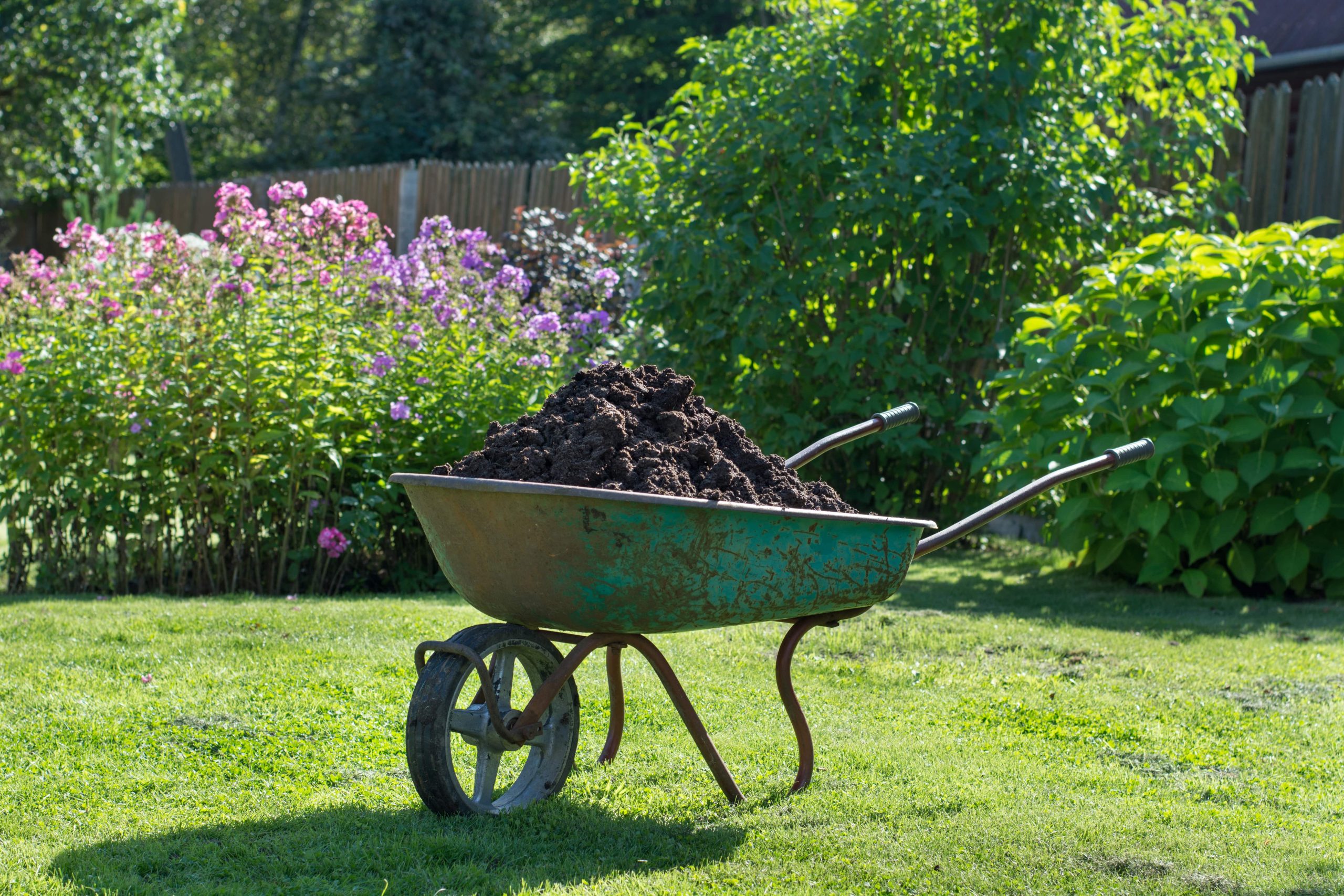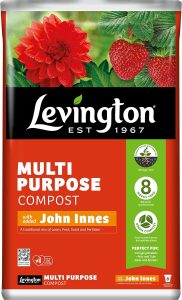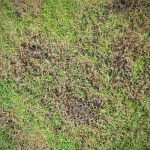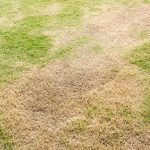If you’re for a natural way to keep your grass healthy, you might be considering top dressing your lawn.
In this lawn care guide, we’ll explain how to top dress a lawn, with either compost or sand (and when to use each option).
What is top dressing?
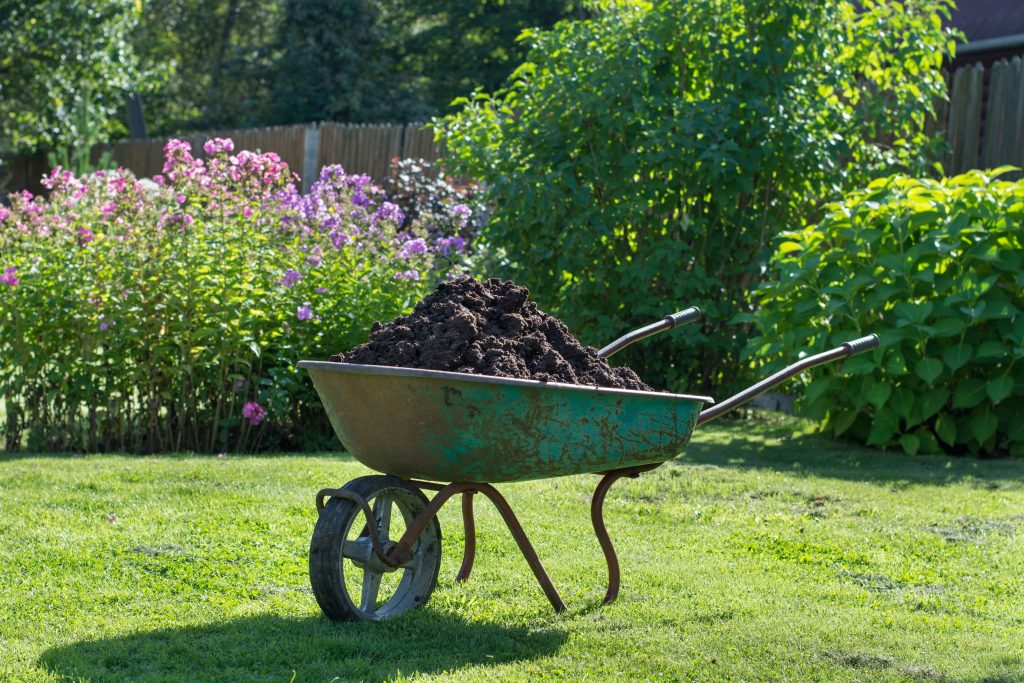
Top dressing is the act of spreading a thin layer of material, such as compost, sand, or topsoil, onto your grass.
You might top dress your lawn in order to fill in slight bumps, and make your grass more even. Top dressing can also help to improve lawn health.
Top dressing lawn with compost
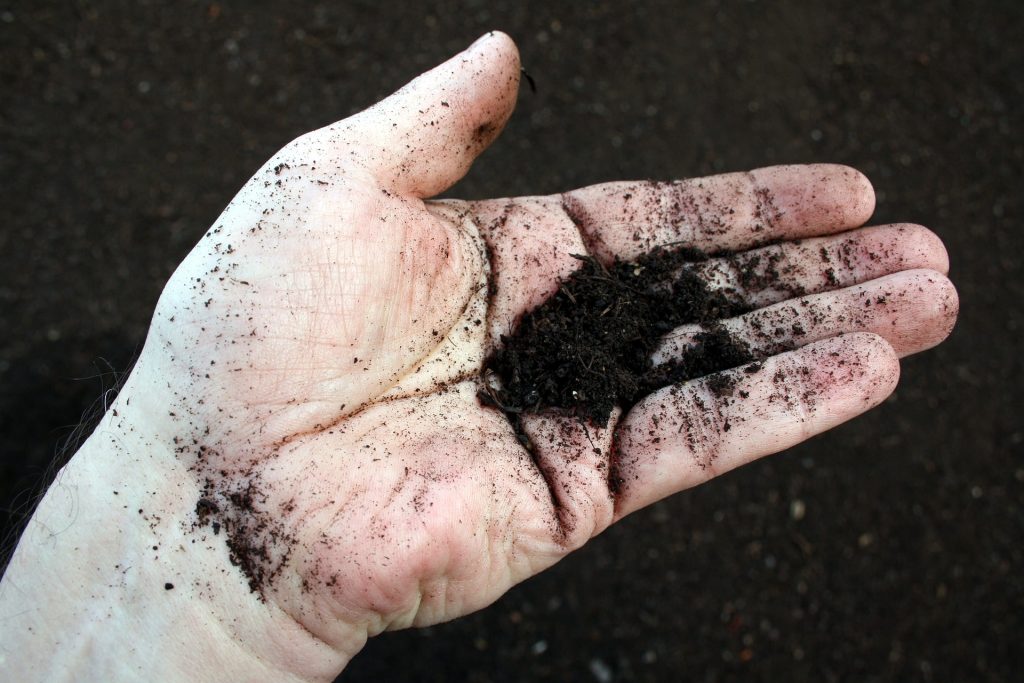
Compost is the most common material for top dressing your lawn. It helps to provide valuable nutrients for your grass, and makes your soil more fertile. Compost can also help to break down thatch, allowing it to decompose rather than you having to scarify and aerate your lawn.
Top dressing a lawn with compost is a common alternative to using chemical fertilisers and pesticides. You might want to avoid using these types of synthetic substances if you’re worried about exposing your children or pets to them. Chemical fertilisers can also harm the wildlife in your garden, and can produce a nutrient runoff that is harmful to the wider ecosystem.
Good-quality compost also has a close to neutral pH level, helping to avoid introducing any issues with nutrient absorption into the soil.
Plus, you can use home-made compost from kitchen scraps for top dressing. You don’t necessarily have to buy compost to use for top dressing, helping you save some money keeping your lawn looking great. Even if you don’t make your own compost, it’s relatively cheap to buy in bulk.
Top dressing lawn with sand
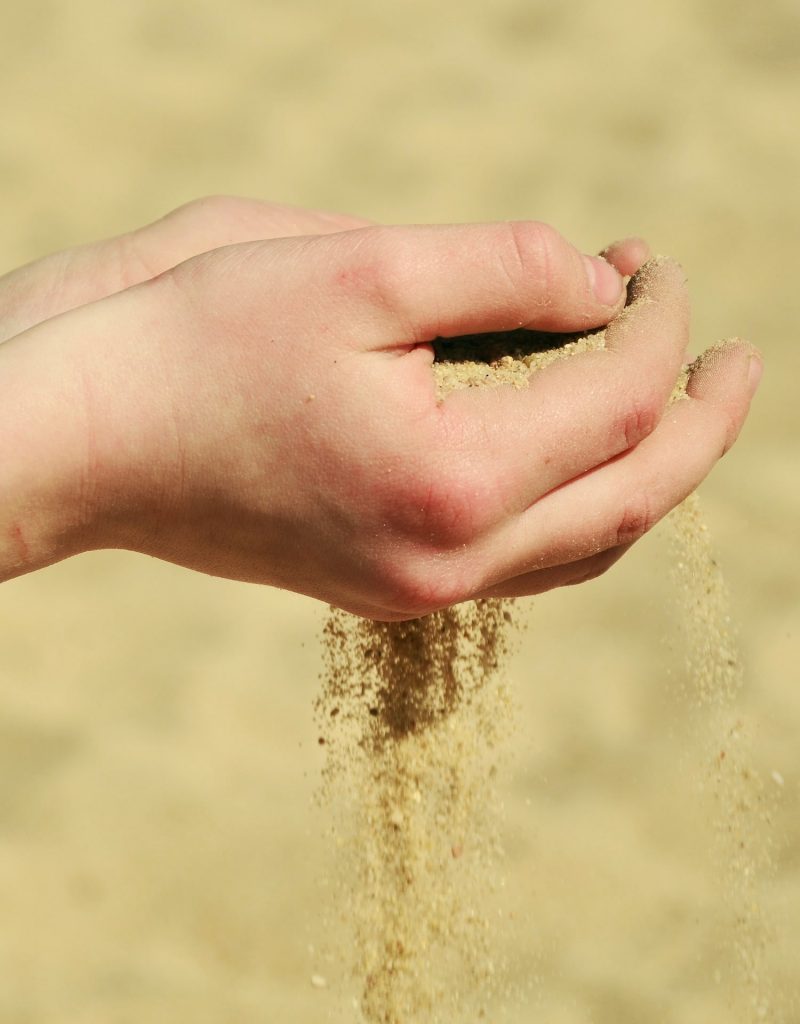
You may also like to introduce sand to your topsoil as a part of your lawn care routine. This can either be done as a standalone application, or mixed with compost and/or loam.
Sand is used to help improve drainage, especially on lawns that commonly become waterlogged. It can also be mixed in with compost, in case you don’t have enough to cover your entire lawn (we’ll cover how much topsoil to add in the next section). Also, sand can help to clear thatch when used in the right quantity.
However, there are risks associated with top dressing your lawn with sand.
- If you introduce sand to clay soils to address a drainage problem, it can actually make the issue worse. The sand will sit on the top of the clay, rather than being mixed into the clay layer. This can weigh down the clay soil, further preventing water from draining.
- Sand does not contain nutrients. If applied on its own, sand can reduce lawn fertility.
- If too much sand is applied, this can choke your grass, no matter what type of soil structure you have. This occurs because sand often forms
- clumps on the top of your soil that block sunlight and moisture.
Sand is often used as a top dressing on golf courses, mostly because it makes for a more even putting surface on the green. It’s also a cheap way to manage thatch growth, when compared to raking or scarifying an entire golf course.
When to top dress your lawn

In the UK, you want to add lawn top dressing in the spring. This is because you want the opportunity to apply the top dressing when it’s relatively dry, but you also want rain soon after to push the top dressing down into the existing soil.
Top dressing in spring also ensures that you get the maximum benefit from the compost or sand you apply. As you head into summer, your grass growth will be at its strongest, and will be hungry for compost to help it grow.
You should generally top dress a lawn about once a year, unless you’re trying to achieve something specific other than improving lawn health. For example, applying sand to improve drainage. Or, top dressing before overseeding to encourage new grass seed growth.
How to top dress a lawn
Here’s how to top dress a lawn.
1. Deciding how much dressing to get
You want to spread about 1cm of top dressing across your entire lawn. Any more and your grass blades may struggle for sunlight, which can cause them to wither. Your lawn should still look mostly green, rather than brown.
This does mean that top dressing has a limited impact on making your lawn more level. Adding a centimetre of top dressing will fill only the smallest of holes.
2. Spreading the top dressing
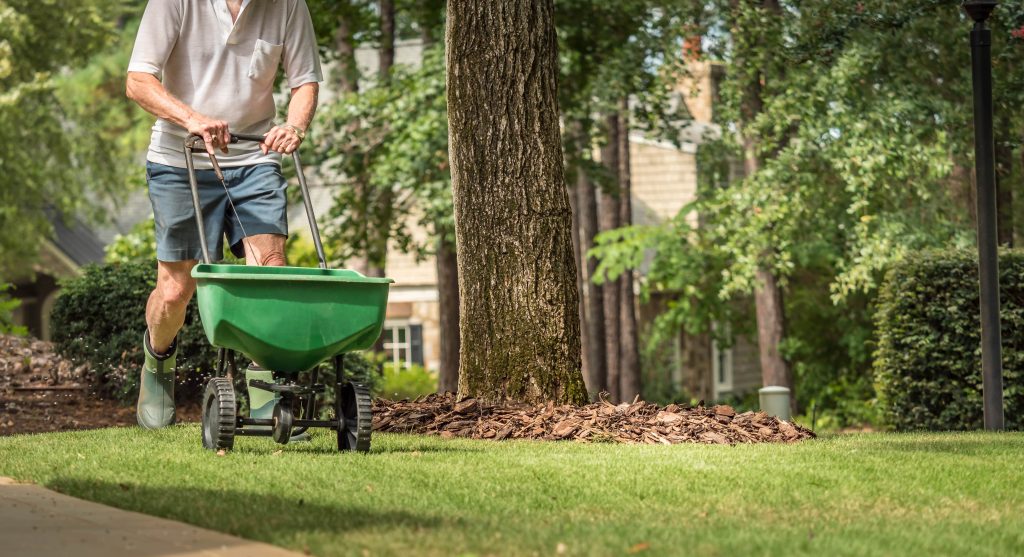
There are a few different ways you can spread top dressing on your lawn.
- For small lawns: use the good old fashioned way. Get a shovel to move the top dressing onto your grass from a wheelbarrow, then use a large broom or the back of a rake to spread it across your lawn.
- For larger lawns: use a drop spreader. A drop spreader is a device that you wheel along, or tow behind a tractor, that automatically spreads compost or other material over your lawn. This helps to make the process much more efficient.
3. What’s next?
After applying the top dressing, here’s what you want to do next.
- Ensure that your grass gets a good soaking within a day or two. This ensures that the top dressing is pushed down into the soil – which is where it needs to get to. If it doesn’t rain, use a sprinkler to water the lawn. If you live in the UK where we get frequent rain, it’s a good idea to apply the top dressing just before a downpour is forecast.
- Avoid walking on your lawn for a few days, until you can no longer see the top dressing. This allows the top dressing to settle.

I’m Josh, and I’m the head writer at Lawn Care Pro.
I love everything lawns, but I’m a bit of a lawn mower nerd. I spend a lot of my free time tinkering with mowers, and planning my mowing schedule for the next few weeks.
I’m also into cars, which comes in very helpful when servicing a mower engine!

